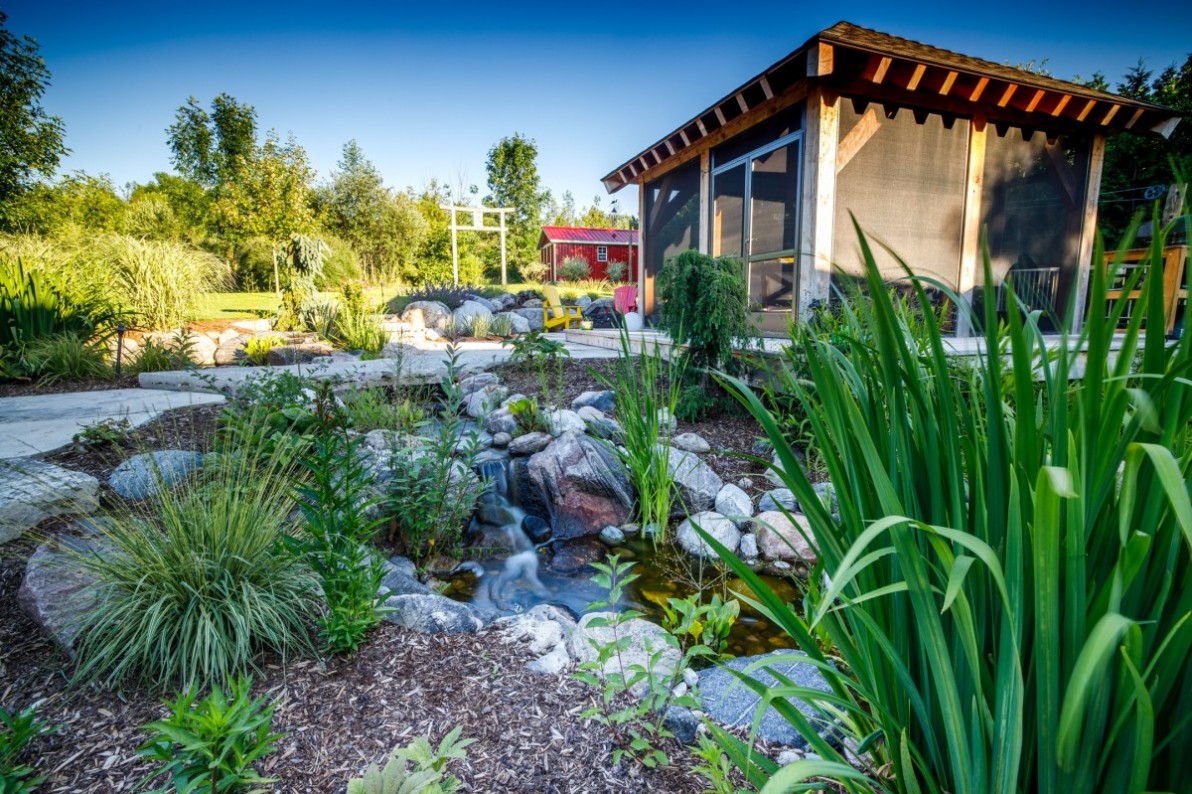An Unbiased View of Landscapers
An Unbiased View of Landscapers
Blog Article
An Unbiased View of Landscapers
Table of ContentsThe smart Trick of Landscapers That Nobody is DiscussingLandscapers Can Be Fun For EveryoneThe Best Guide To LandscapersAll About LandscapersThe Ultimate Guide To LandscapersA Biased View of Landscapers
- A garden feature where water is represented by an aggregate stone item, typically a crushed rock or granite. These are most generally discovered in modern and Japanese yard style.- A stone or flagstone outdoor patio, path, or sidewalk built without a concrete base. The base would certainly be compacted crushed rock and the joints would certainly be an accumulation or walkable ground cover. - A stone keeping or free standing wall constructed without the usage of mortar. A very competent mason is needed for a dry pile stone wall. The majority of walls in Portland are moist stacked, also if they seem. - A below ground framework that collect water and enables it to slow down percolate right into the dirt around it.
Landscape design that is suitable with a sites' setting in both look and sustainability without adverse effects to the setting. Edging in the landscape is a line of demarcation that develops aesthetic interest in the garden by dividing one sector from one more sector. This can be visual or functional, keeping one aspect (such as pea crushed rock) from getting blended right into another (like bark dust).
Locations can likewise have a sensation of "room" provided by trees, various other growings, fences, or displays. The landscape near the access to a structure.
The Buzz on Landscapers

The element in a landscape design or area in a landscape that is meant to be most prominent. The focal factor can be a plant, boulder, sculpture, collecting room, or other landscape function.

6 Simple Techniques For Landscapers
Rock item, either rounded or fractured, that is reasonably small- usually 1" or much less. Low plants that are allowed or urged to spread out over an area. Can describe any kind of "tough" yard elements consisting of statuary or boulders yet a lot of frequently is utilized to describe courses, patio areas, and walls.: Height difference in between the degree of water in a pond (or the level of the pump if it sits outside the fish pond) and the upper electrical outlet of water which influences performance of the water pump in gph (gallons per hour). Thick bushes or trees that form a fencing, display, or border.
A chemical made use of to control weeds. click here for more Fencing boards that run flat, often used in contemporary or Japanese-inspired landscape designs. Lines that define spaces within a landscape concept. These usually expand from corners or key functions of an existing structure. Correct use fictional lines can help the landscape feel connected to the home and various other aspects.
Conventional PNW landscapes are informal. A plant that spreads out more than desired, or into environments where it does damage.
Little Known Facts About Landscapers.
Smart irrigation controller reviews and recommendations below. 2-D making of the suggested irrigation system. Can consist of head positionings and protection, pipe sizing, GPM specifications, and products required to mount this system. An irrigation strategy is normally unneeded for houses however is usual for industrial tasks. Accredited specialist that creates landscapes, coached in engineering and style along with in cultivation.
The specialist who intends and creates landscape jobs, usually at a household or tiny industrial degree with the significant layout inspiration on growings. Landscape designers normally have less schooling than Landscape Architects and are not accredited. A finished landscape style, detailing all components for the new landscape. This typically takes the form of a drawing theoretically.
Utilizing lots of growings of the exact same variety to click for more load in an area in the landscape. This can decrease maintenance and water usage in the garden.
A mix of cement, sand, and water that is made use of in rock stonework for setting stones and joints. A layer of garden compost or bark dirt used at the base of a plant. A mass planting of moss. A plant that was existing in a geographic location prior to individuals began changing the landscape.
See This Report on Landscapers
Just how the garden or a garden aspect is prepared in partnership to an existing or new function or to an instructions. Yards that are not trimmed however expanded in landscapes as perennials.

Plants that provide seasonal interest and after that pass away back in the winter. Cold season grass that is the most typical turf grass in Portland, OR and the rest of the PNW.An open roofed look at this site structure over a patio area or various other landscape feature.
Lava aggregate varying in size from 1/4" to dirt. One of the most typical landscape gravel in the PNW. Area of the landscape developed to manage rain water up until it can soak into the ground. A chain that regulates water as it travels from a roofing system gutter to the ground. Yard structure that develops a planting location that is consisted of and more than the surrounding grade.
Producing a garden function consisting mostly of rocks with growings that complement and can thrive in the rocky atmosphere. Sprinkler head design that revolves a stream of water across a location.
The Only Guide for Landscapers

Report this page